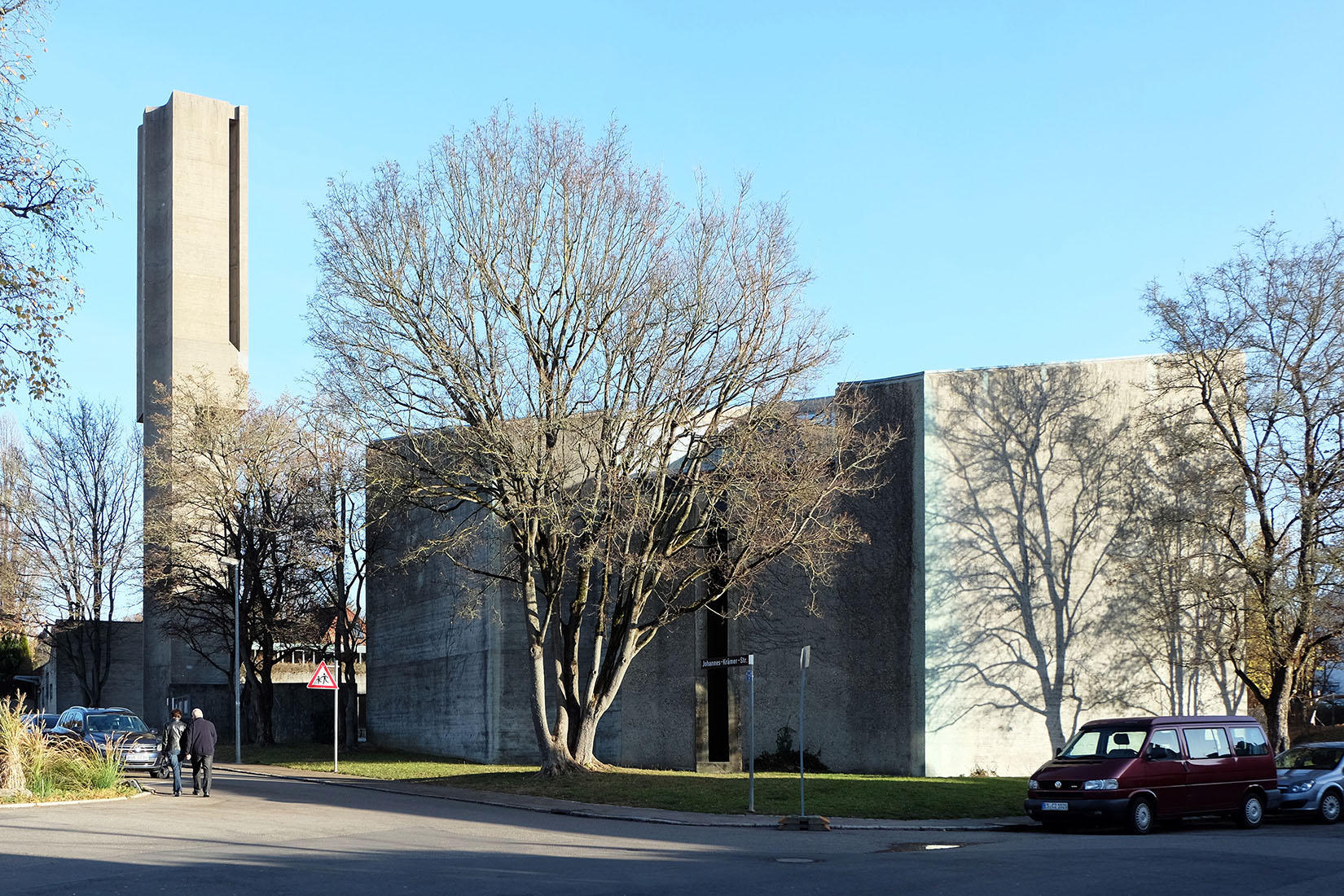 |
 |
 |
 |


Protestant Community Centre
Johannes-Krämer Strasse, Stuttgart
1963 - 1966
For the 1963 competition two Swiss architects, Otto Senn and Ernst
Gisel, were invited to submit a proposal in addition to the approved German architects.
The competition design by Ernst Gisel received the 1st prize, and was subsquently built in Stuttgart-Sonenberg. Sonnenberg is a suburb of Stuttgart,
where the edification consists mainly of single-family houses. The arrengement of the community center is related to the scale of its environment,
and at the same time also creates a point of reference that was missing until now.
The assembly of buildings is distanced from the street and encloses an intimate courtyard. The ensemble consists of the community center with hall,
foyer and two nursery schools and a church with a detached bell tower, which marks the entrance to the courtyard. The exterior of the ensemble is determined
by the consistent use of exposed concrete. For flat surfaces unpolished wooden formwork were used. In contrast the rounded shapes of the concrete were
partially hammered. The individual buildings open to the courtyard by covered walkways in the form of a pillared hall. To the west, the courtyard ends at the
almost completely closed wall of the church. This wall equally dominates the courtyard and at the same time it is an integral part of the square elevation.
The gently sloped, paved surface of the courtyard is drawn into the church, which drops slightly in the seating area, and then slightly ascends again in the choir area.
Various elements suggest that Ernst Gisel closer studied Le Corbusier's church at Ronchamp (1950 - 1955). Firstly there is to be mentioned the design of
the wall of the choir, which is of a convex form in contrast to the traditional apsis. This form urges that the liturgical action is pushed into the room taking place
at a single large table. Secondly, there is the sculptural envelope of the space. The gently inclined, whitewashed walls reflect the light which enters through
the invisible skylights. The skylights are covered by the ceiling which is also white-plastered and is considered to be a membrane roof (round bar grid construction).
Two prominent engineers were involved in the construction of the ensemble. Fritz Leonhardt was responsible for the entire complex, while Frei Otto was
in charge of the suspended roof of the church.
The competition design by Ernst Gisel received the 1st prize, and was subsquently built in Stuttgart-Sonenberg. Sonnenberg is a suburb of Stuttgart,
where the edification consists mainly of single-family houses. The arrengement of the community center is related to the scale of its environment,
and at the same time also creates a point of reference that was missing until now.
The assembly of buildings is distanced from the street and encloses an intimate courtyard. The ensemble consists of the community center with hall,
foyer and two nursery schools and a church with a detached bell tower, which marks the entrance to the courtyard. The exterior of the ensemble is determined
by the consistent use of exposed concrete. For flat surfaces unpolished wooden formwork were used. In contrast the rounded shapes of the concrete were
partially hammered. The individual buildings open to the courtyard by covered walkways in the form of a pillared hall. To the west, the courtyard ends at the
almost completely closed wall of the church. This wall equally dominates the courtyard and at the same time it is an integral part of the square elevation.
The gently sloped, paved surface of the courtyard is drawn into the church, which drops slightly in the seating area, and then slightly ascends again in the choir area.
Various elements suggest that Ernst Gisel closer studied Le Corbusier's church at Ronchamp (1950 - 1955). Firstly there is to be mentioned the design of
the wall of the choir, which is of a convex form in contrast to the traditional apsis. This form urges that the liturgical action is pushed into the room taking place
at a single large table. Secondly, there is the sculptural envelope of the space. The gently inclined, whitewashed walls reflect the light which enters through
the invisible skylights. The skylights are covered by the ceiling which is also white-plastered and is considered to be a membrane roof (round bar grid construction).
Two prominent engineers were involved in the construction of the ensemble. Fritz Leonhardt was responsible for the entire complex, while Frei Otto was
in charge of the suspended roof of the church.